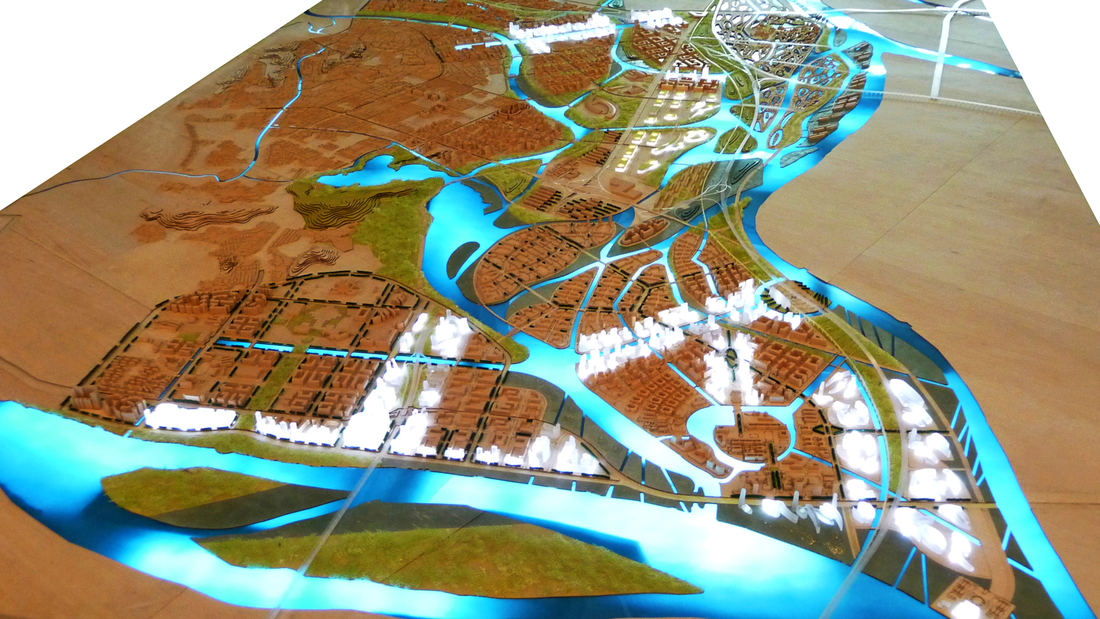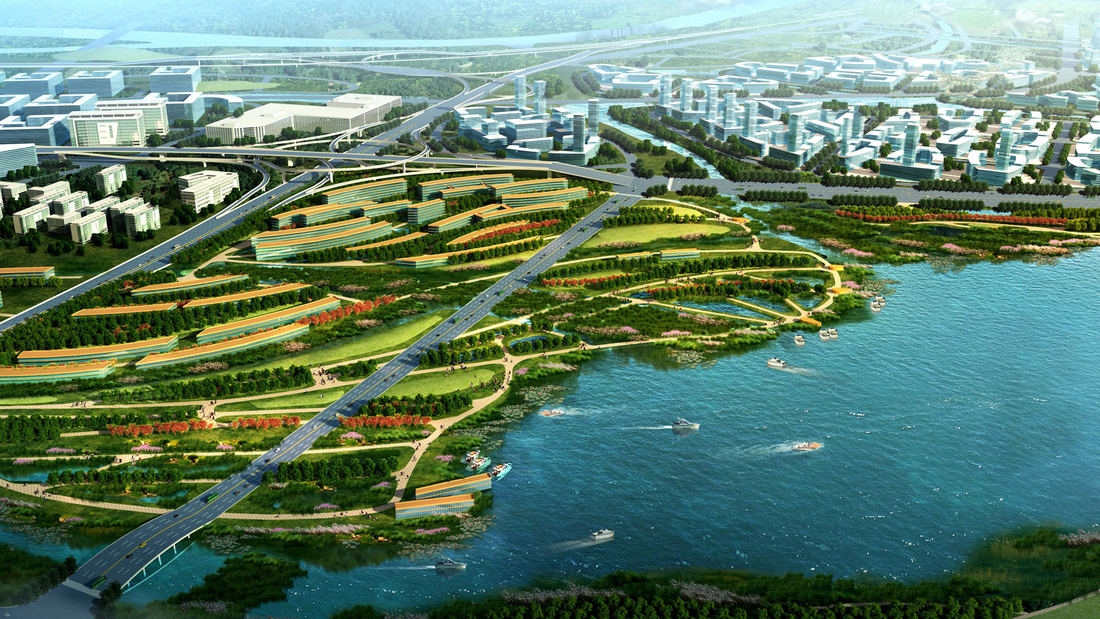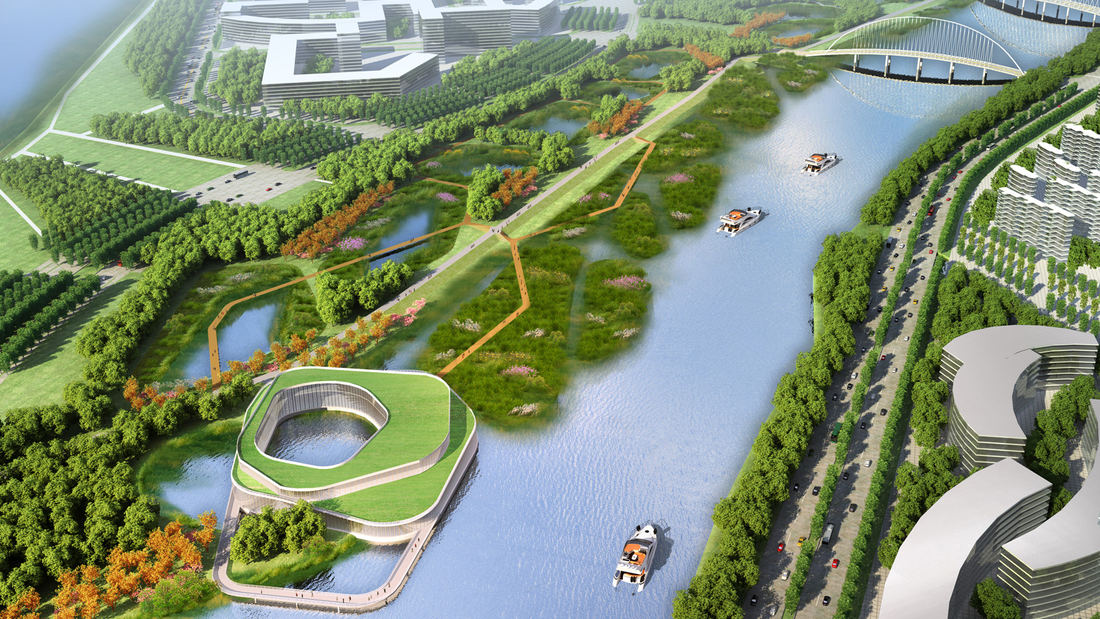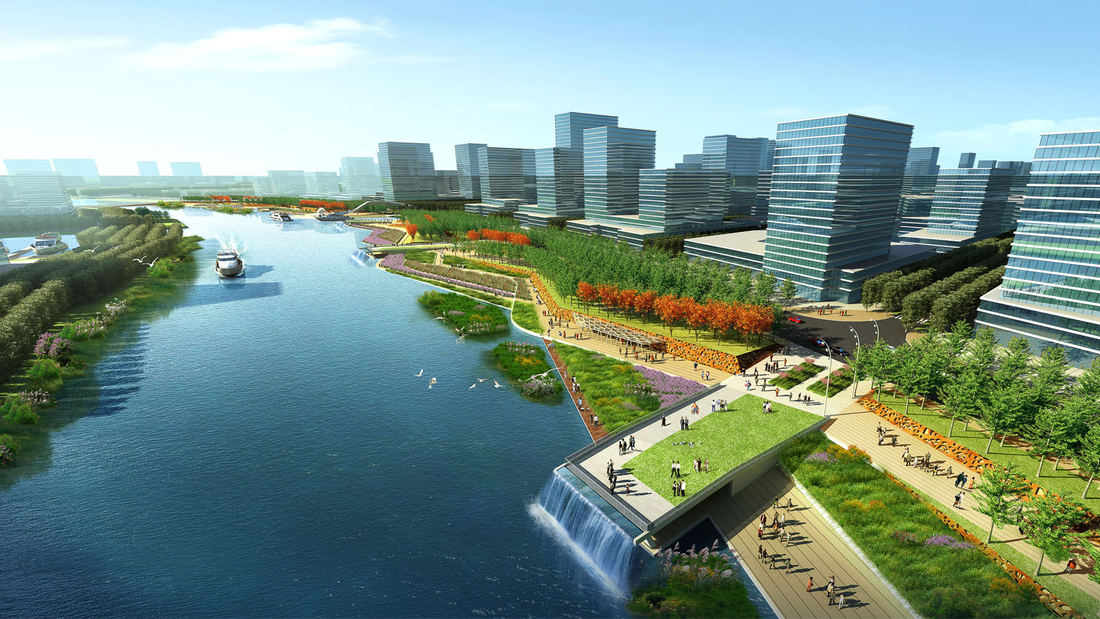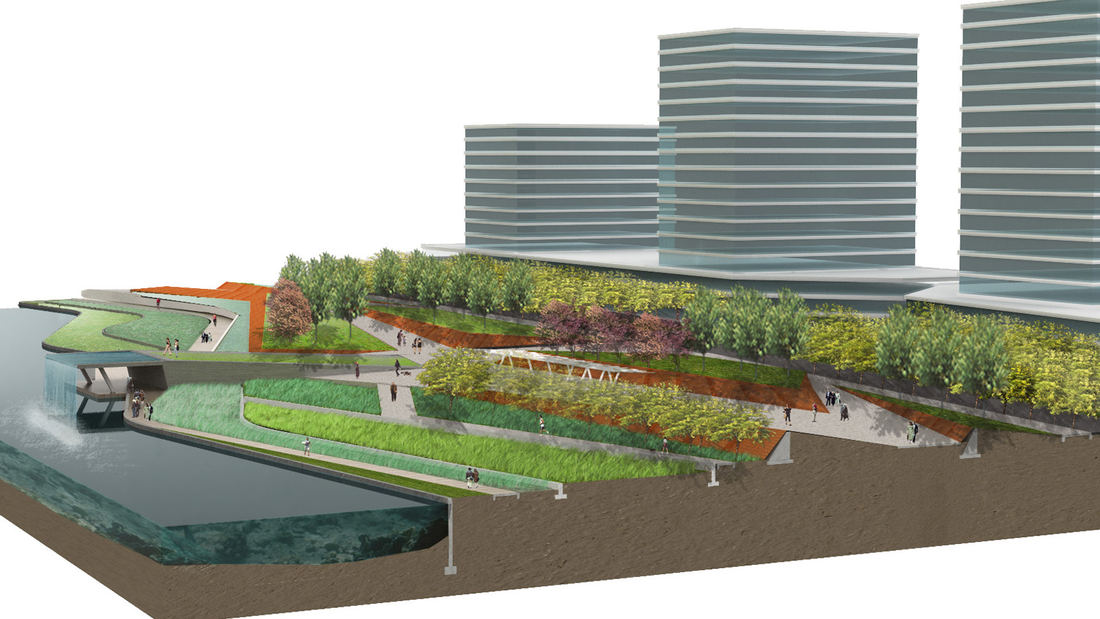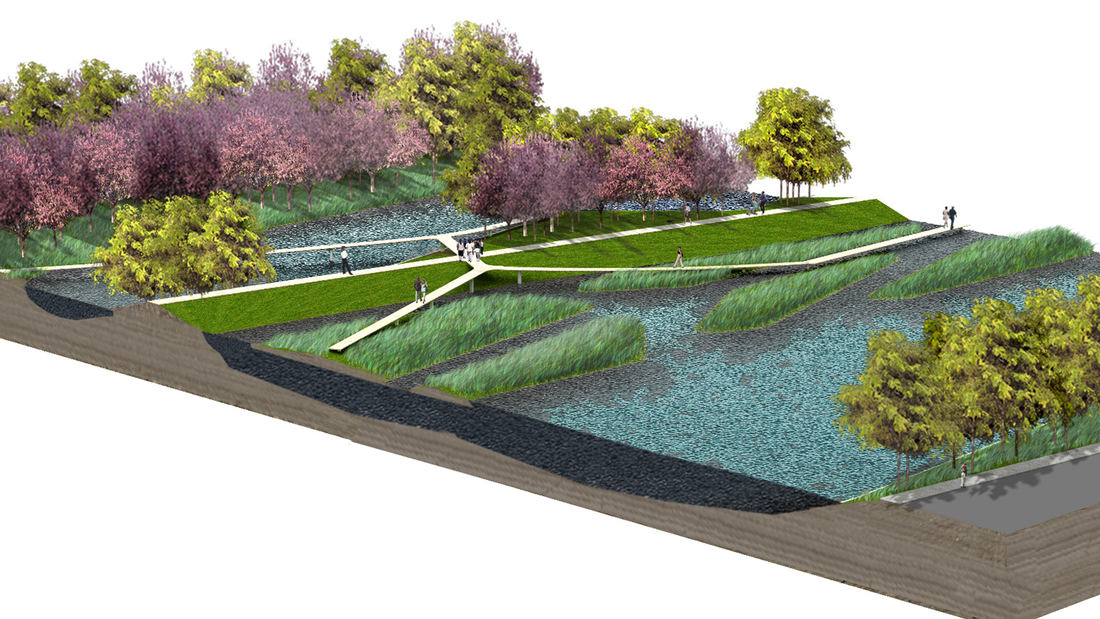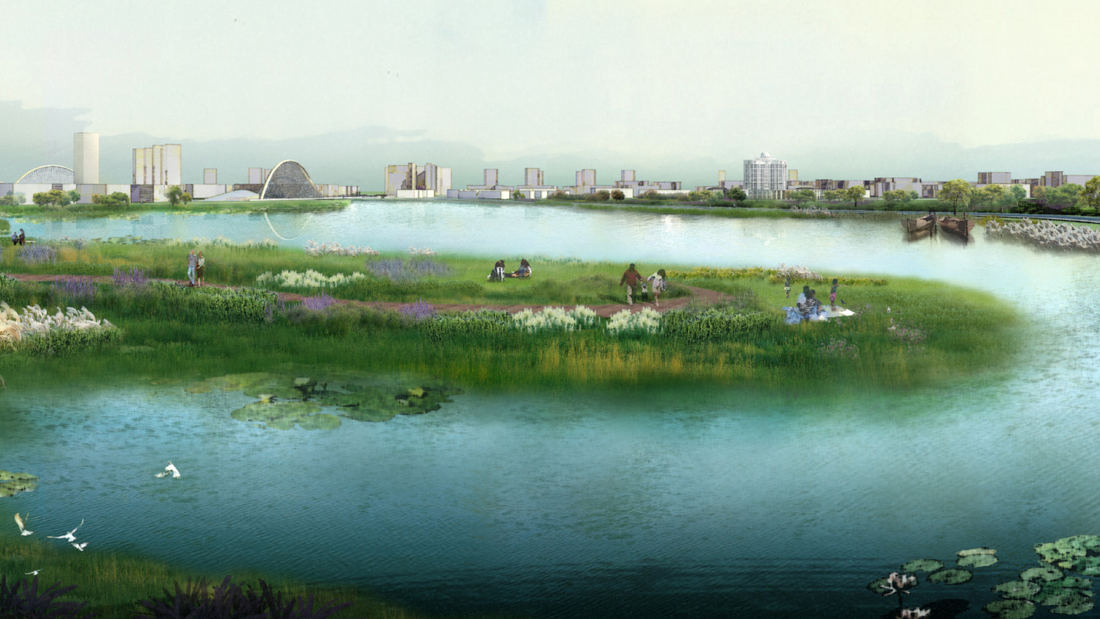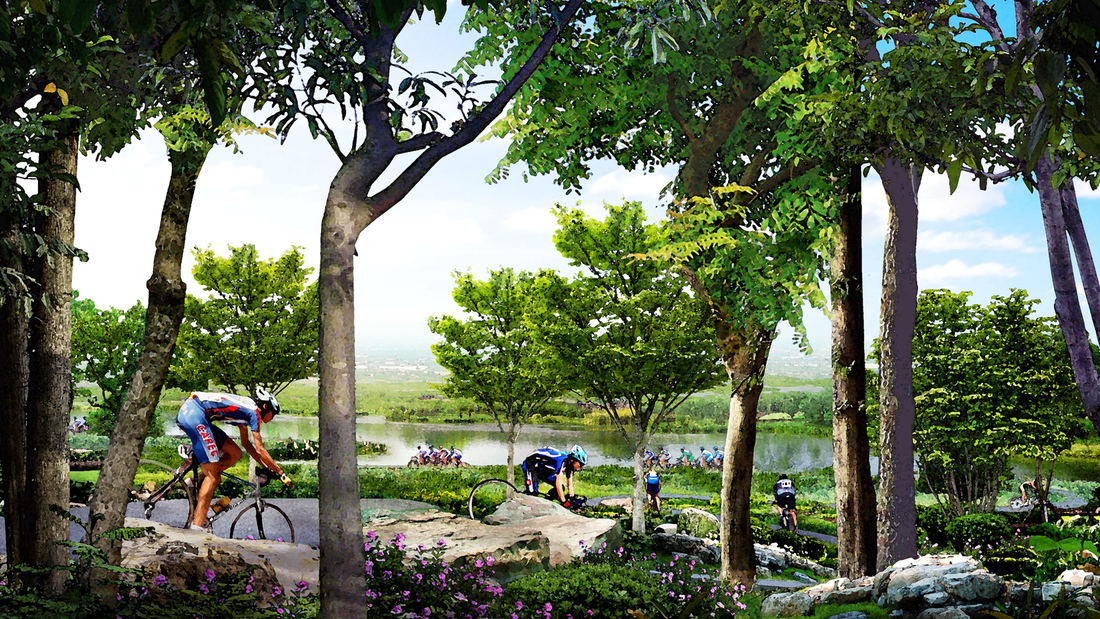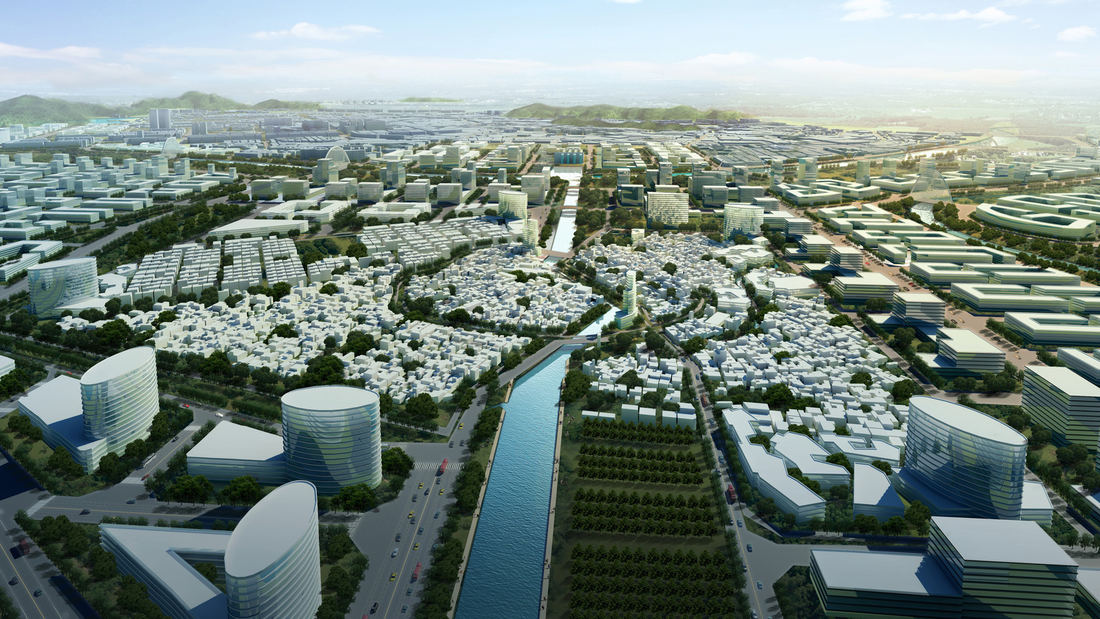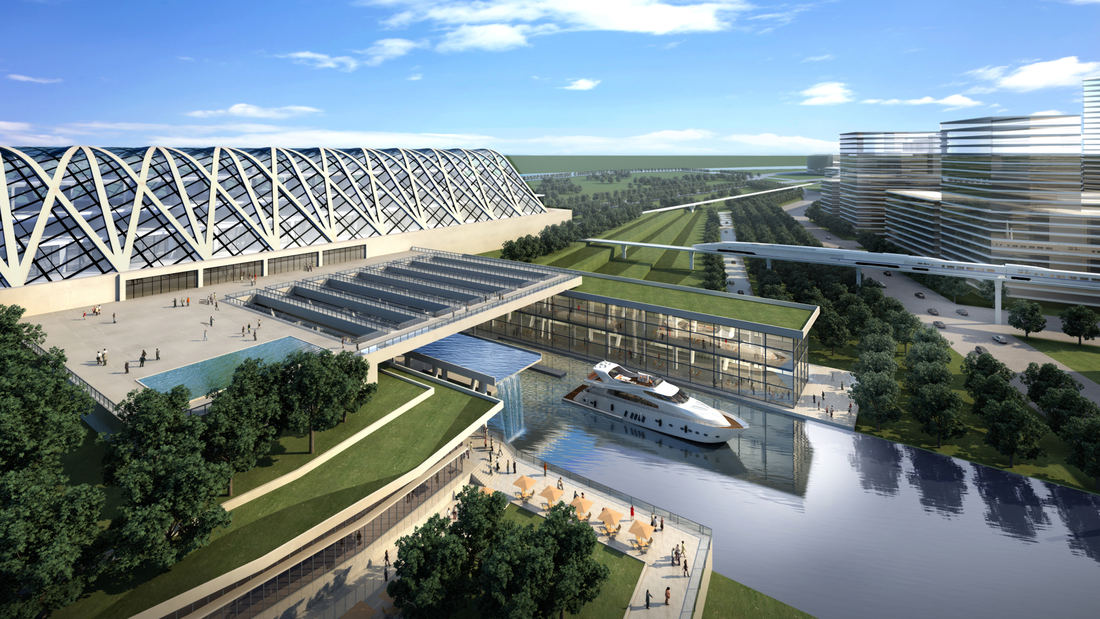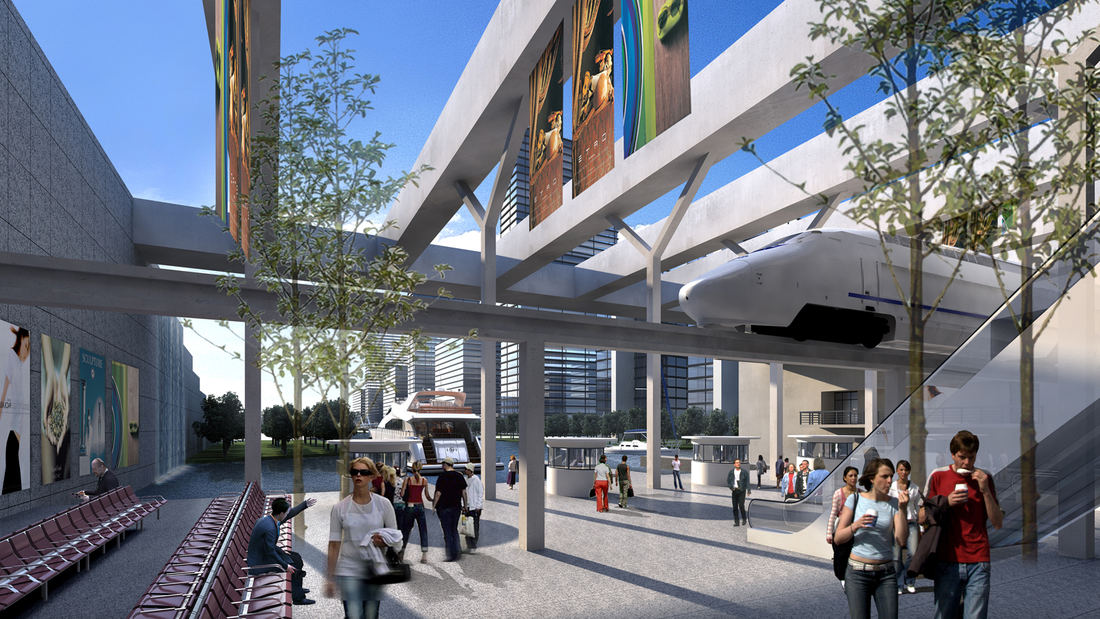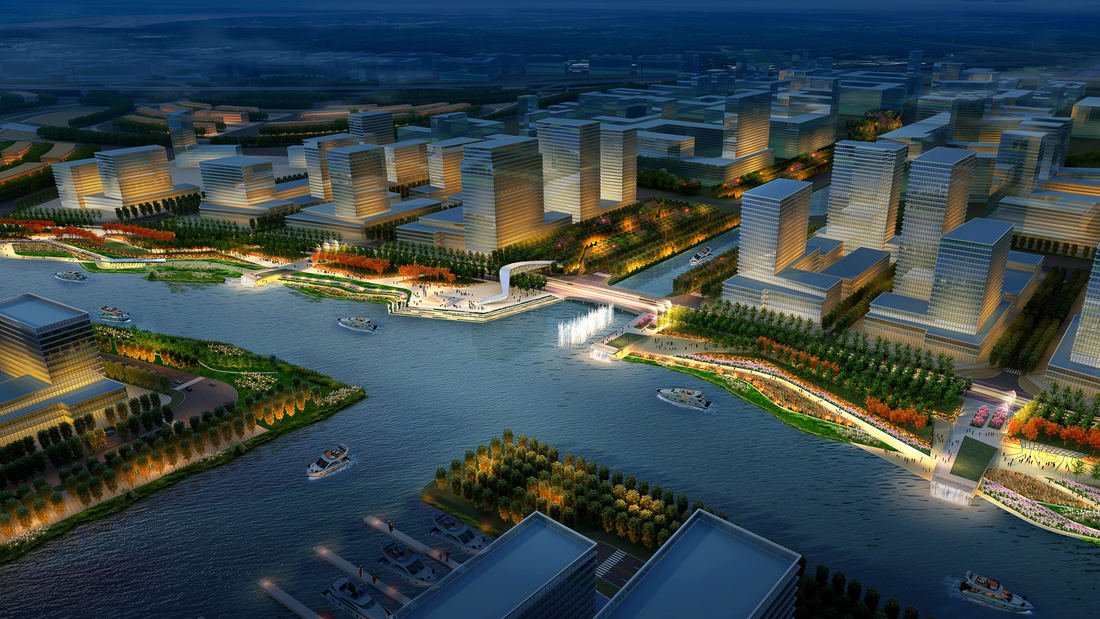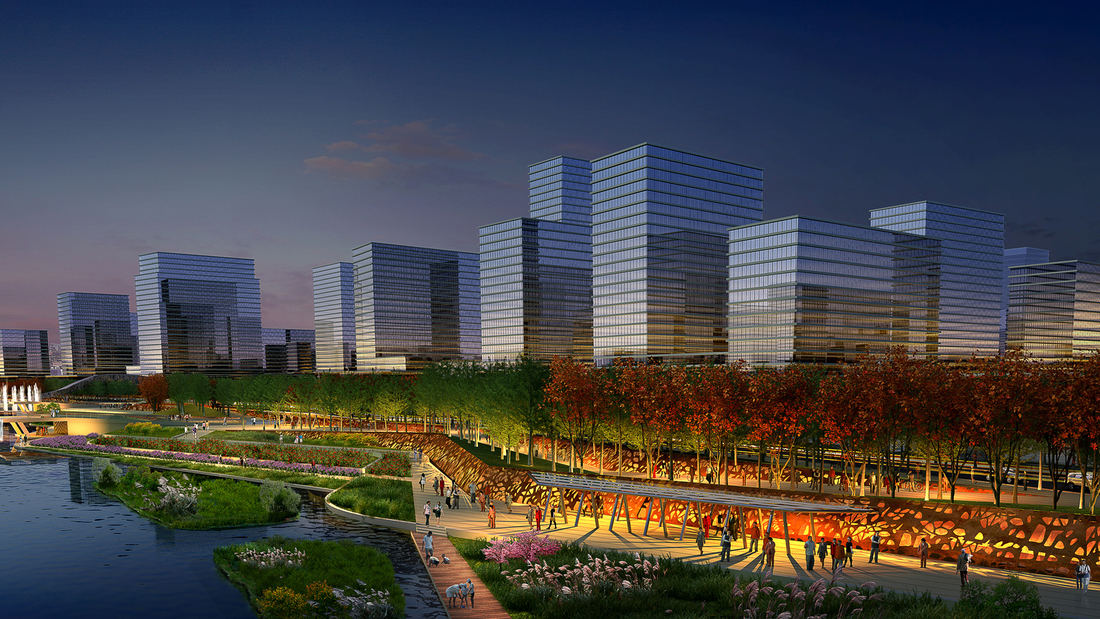SWA participated in a competition reimagining 19-kilometers of the Guipan River waterfront in Shunde, China. While the Pearl River Delta is one of the fastest growing regions of Southern China, one of the many casualties of this growth was the delta itself. Presently, Shunde has a growing flooding problem enhanced by channelizing, condensing, and containing the river system. What was once a healthy delta with countless braided river ecologies has now been constrained into 3 river systems. SWA’s design for the Guipan waterfront reflects the local Linnan waterway and “mulberry-and-fish-pond” agricultural system as the typology of new wetlands and park spaces, expressed as a series of wetland filtration ponds. The larger setting for the waterfront park is the 72-square-kilometer master plan previously developed by SWA and focuses on five unique zones: Urban Park, Wildlife Park, Recreation Park, Office Park, and Wetland Park. The concept focuses on restoring the constructed wetlands as the armature for a multimodal city while restoring the wildlife habitats for the larger Pearl River Delta. The plan develops individual islands as pedestrian-scaled mixed-use villages that are linked by a proposed environmental infrastructure of greenbelts, water corridors, rail, trails and a multilayered transportation system. In order to maximize edge surface area and increase opportunities for exchange, the 19-kilometer Guipan River project proposes a braided system of fine-grained waterways to increase filtering capacity and reconnect the new planned City of Shunde to the river. SWA’s design for the site maximizes the social and economic value of the river by emphasizing and expanding its inherent qualities of place, ultimately creating a comprehensive and connected waterfront to rehabilitate and reestablish the Pearl River Delta as a healthy ecological landscape.
Nanhu New Country Village
China’s rapid urbanization over the past several decades has radically diminished its agricultural landscapes and labor force, focusing instead on industrial and technological advancements. The Nanhu New Country Village brings a contemporary approach to integrating agriculture and residences in a village setting, enhancing existing rural character, and improvi...
Fuyang Riverfront
Seizing the area’s reputation for “one of the best mountain and water views in the world,” the natural framework along both sides of the Fuchun River inspires this plan integrating urban spaces with landscape to create a harmonious skyline. Fuyang flourishes with economic prosperity while honoring its vibrant cultural heritage.
The scope includes urban d...
Shenzhen Bay
Situated just across the bay from Hong Kong, the city of Shenzhen has transformed from a small fishing town of 30,000 to a booming city of over 10 million people in 40 years – and has grown over 200 times its original size since 1980. Along the way, the character of Shenzhen’s bayfront was radically altered. Over 65 km2 of marsh and shallow bay were filled to ...
The Landscapes of Wuhai
The Inner Mongolian city of Wuhai is transforming from focusing on coal mining as its main industry to tourism. This very special place has many different, striking landscape types located within just 1666 sq. kilometers: sand dunes, mountains, and wetlands, plus adjacency to the Yellow River. Consequently, the city has decided to boost its tourism. Already pl...


